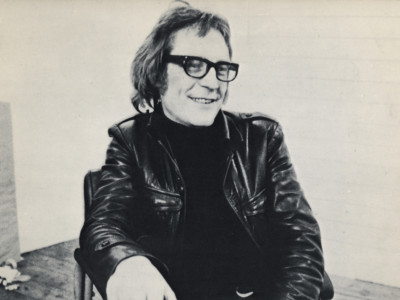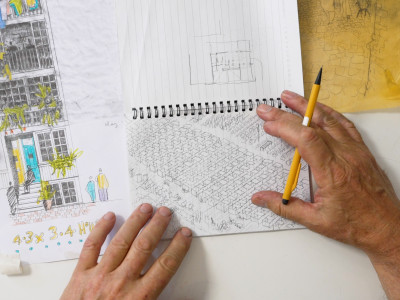
Richard MacCormac RA remembered
By Amy Macpherson
Published on 28 July 2014
People from around the RA pay tribute to leading architect Sir Richard MacCormac, who has died aged 75 following a long illness.
"Sir Richard MacCormac RA was held in universal esteem by Academicians," says the President of the Royal Academy, Christopher Le Brun.
"Not only was he one of our most distinguished architects but he took the leading role for many years in the Academy Forum. The Forum has been at the heart of our intellectual life in bringing together all disciplines for significant discussions which often lead on to publication.
"Richard had a love of ideas and art for their own sake. In conversation one could not help being impressed by the urgency and passion with which he spoke and the way he had of drawing all the disparate fields of art within the orbit of his infectious enthusiasm.
"I and my fellow Royal Academicians will miss him greatly."
The RA's Secretary and Chief Executive, Charles Saumarez Smith, remembers Richard MacCormac as "someone who practised at the highest level as a modern architect, but maintained a deep interest in history and ideas".
"I first remember admiring him as a highly intelligent designer of new university buildings, including the Sainsbury Building at Worcester College, Oxford (1983), the Ruskin Library at the University of Lancaster (1996) and, more recently, the magnificent Burrell's Fields at Trinity College, Cambridge (1997).
"He was one of six practices shortlisted to design a new extension for the National Portrait Gallery in 1994 and he was the first person to suggest an escalator to connect its three floors. It was sad that his last years were blighted by being turned down from completion of the BBC's Portland Place building for which he had done the initial designs.
"Since becoming Secretary and Chief Executive seven years ago, I have hugely appreciated getting to know Richard well, not least as a local resident in Spitalfields where he and Jocasta Innes were generous hosts. His architecture was an intelligent hybrid of modernism combined with his deep knowledge of historical forms, described by the Architectural Review as 'romantic pragmatism'."
Richard MacCormac was instrumental in establishing and developing the Royal Academy's Architecture Programme.
"With his sophisticated knowledge of architecture and his passion for the arts, Richard was the perfect figure to launch and shape the programme," says Kate Goodwin, the RA's Drue Heinz Curator of Architecture.
Andrea Palladio through the Eyes of Contemporary Architects: Sir Richard MacCormac RA
"As chair of the Architecture Committee for 10 years he gave it direction, focus and ambition which saw it develop exponentially. Every conversation with Richard was a joy and a revelation in some form, very often marked by a salient anecdote, heartily told.
"I fondly remember the day we conducted a film interview in his magical study in Heanage Street for a special project about Palladio [see above]. He showered us with insightful observations of Palladio’s work and his influence in a way which only Richard could do. He spoke of how ideas from the past could be translated in such a way as to retain their essence and be entirely relevant to the present. Richard himself leaves a legacy of buildings which I am certain will continue to reveal themselves and convey his wisdom."
Jeremy Melvin, Consultant Curator for the Architecture Programme, remembers Richard MacCormac's enthusiasm for discussion and debate.
"Richard brought to his long chairmanship of both the RA’s Architecture Committee and the RA Forum a deep belief in architecture’s place among the arts, but also a zest for debating exactly where that place is.
"The Forum has explored architecture’s links to meaning as well as function, cultural values as well as commercial value, to dance, music and poetry as well as all the visual arts."
Richard MacCormac RA, 1938 – 2014
Related articles

In memoriam: Mick Moon RA
1 May 2024

Crunch: inside the first Architecture Window display
14 February 2024





